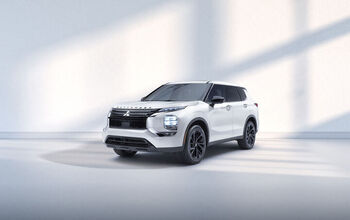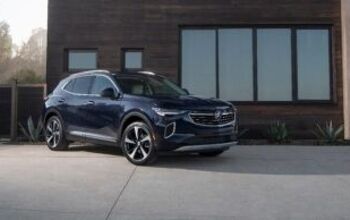QOTD: What to Do With Mini?

It’s a brand most of us never think about. We never consider buying one, nor do we rush to our laptops/tablets/phones to excitedly discuss the latest update to the brand’s lineup. Simply put, there’s something about the brand that’s lacking.
Maybe it’s horsepower, or lack thereof. Or maybe it’s reliability. Whatever the reason, Mini is not — with some exceptions — at the forefront of our collective consciousness.
It’s a brand that tries hard to remain relevant, especially over here in Crossoverland. Hey, four doors on a Cooper! Look — a longer Clubman! Excuse me, sir, can we interest you in a considerably larger Countryman? Nothing Mini about it, har har…
And yet, for all of its attempts to stay in the buying public’s eye — culling unpopular models like the Paceman and “right-sizing” its current products — Mini’s U.S. sales are still heading in the wrong direction after reaching a 2013 peak. That year saw the brand unload 66,502 units, a clear high-water mark. Last year? 52,030. The first four months of 2017 shows sales slipping behind last year’s tally.
The brand needs to do something to slow the descent, but — as we learned yesterday — it won’t field any new models for a number of years.
The question is: would adding new models have even helped? Mini executives apparently felt it wouldn’t. Otherwise, the anticipated sedan, roadster and micro-Mini two-seater wouldn’t be collecting dust as the brand waits for the next-generation of vehicles. Only then, perhaps, will we see a new model.
The problem with Mini isn’t murky. It’s a nostalgic brand centered around small cars that hobbled into a truck and SUV-obsessed marketplace with a clear handicap. Due to concerns over brand identity, it can’t build you a midsize or full-size truck. Nor can it compete against the Ford Explorer. It could, of course, but it would have to kiss that identity goodbye. And really, who’s going to buy a British truck?
Is the BMW-owned automaker destined to forever remain a niche brand in the U.S.? A quirky expression of the buyer’s individuality? Maybe.
So what would you do, Best and Brightest, if you found your hands on the levers of change at Mini? Would you be content in having the core models languish? Would you green-light a slew of quirky, sporty new small car models, or would you go big — maybe approving the unthinkable?
Or, would you pull that other lever, lowering the coffin containing the brand into the ground forever?
[Image: Mini]

More by Steph Willems
Latest Car Reviews
Read moreLatest Product Reviews
Read moreRecent Comments
- Bd2 Lexus is just a higher trim package Toyota. ^^
- Tassos ONLY consider CIvics or Corollas, in their segment. NO DAMNED Hyundais, Kias, Nissans or esp Mitsus. Not even a Pretend-BMW Mazda. They may look cute but they SUCK.I always recommend Corollas to friends of mine who are not auto enthusiasts, even tho I never owed one, and owned a Civic Hatch 5 speed 1992 for 25 years. MANY follow my advice and are VERY happy. ALmost all are women.friends who believe they are auto enthusiasts would not listen to me anyway, and would never buy a Toyota. They are damned fools, on both counts.
- Tassos since Oct 2016 I drive a 2007 E320 Bluetec and since April 2017 also a 2008 E320 Bluetec.Now I am in my summer palace deep in the Eurozone until end October and drive the 2008.Changing the considerable oils (10 quarts synthetic) twice cost me 80 and 70 euros. Same changes in the US on the 2007 cost me $219 at the dealers and $120 at Firestone.Changing the air filter cost 30 Euros, with labor, and there are two such filters (engine and cabin), and changing the fuel filter only 50 euros, while in the US they asked for... $400. You can safely bet I declined and told them what to do with their gold-plated filter. And when I changed it in Europe, I looked at the old one and it was clean as a whistle.A set of Continentals tires, installed etc, 300 EurosI can't remember anything else for the 2008. For the 2007, a brand new set of manual rec'd tires at Discount Tire with free rotations for life used up the $500 allowance the dealer gave me when I bought it (tires only had 5000 miles left on them then)So, as you can see, I spent less than even if I owned a Lexus instead, and probably less than all these poor devils here that brag about their alleged low cost Datsun-Mitsus and Hyundai-Kias.And that's THETRUTHABOUTCARS. My Cars,
- NJRide These are the Q1 Luxury division salesAudi 44,226Acura 30,373BMW 84,475Genesis 14,777Mercedes 66,000Lexus 78,471Infiniti 13,904Volvo 30,000*Tesla (maybe not luxury but relevant): 125,000?Lincoln 24,894Cadillac 35,451So Cadillac is now stuck as a second-tier player with names like Volvo. Even German 3rd wheel Audi is outselling them. Where to gain sales?Surprisingly a decline of Tesla could boost Cadillac EVs. Tesla sort of is now in the old Buick-Mercury upper middle of the market. If lets say the market stays the same, but another 15-20% leave Tesla I could see some going for a Caddy EV or hybrid, but is the division ready to meet them?In terms of the mainstream luxury brands, Lexus is probably a better benchmark than BMW. Lexus is basically doing a modern interpretation of what Cadillac/upscale Olds/Buick used to completely dominate. But Lexus' only downfall is the lack of emotion, something Cadillac at least used to be good at. The Escalade still has far more styling and brand ID than most of Lexus. So match Lexus' quality but out-do them on comfort and styling. Yes a lot of Lexus buyers may be Toyota or import loyal but there are a lot who are former GM buyers who would "come home" for a better product.In fact, that by and large is the Big 3's problem. In the 80s and 90s they would try to win back "import intenders" and this at least slowed the market share erosion. I feel like around 2000 they gave this up and resorted to a ton of gimmicks before the bankruptcies. So they have dropped from 66% to 37% of the market in a quarter century. Sure they have scaled down their presence and for the last 14 years preserved profit. But in the largest, most prosperous market in the world they are not leading. I mean who would think the Koreans could take almost 10% of the market? But they did because they built and structured products people wanted. (I also think the excess reliance on overseas assembly by the Big 3 hurts them vs more import brands building in US). But the domestics should really be at 60% of their home market and the fact that they are not speaks volumes. Cadillac should not be losing 2-1 to Lexus and BMW.
- Tassos Not my favorite Eldorados. Too much cowbell (fins), the gauges look poor for such an expensive car, the interior has too many shiny bits but does not scream "flagship luxury", and the white on red leather or whatever is rather loud for this car, while it might work in a Corvette. But do not despair, a couple more years and the exterior designs (at least) will sober up, the cowbells will be more discreet and the long, low and wide 60s designs are not far away. If only the interiors would be fit for the price point, and especially a few acres of real wood that also looked real.


































Comments
Join the conversation
Well, Mini is not so Mini any more. So are most people that try to squeeze themselves into BMW's smallest car. The first New Mini looked nice, particularly since only the young and lean would fit into that one. Since then BMW has tried way too hard to bring the Mini to more customers, and it became bloated beyond brand recognition.
I bought a British truck . . .